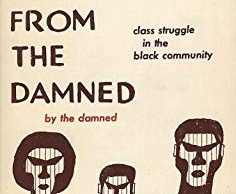If coherent light
Marina Abramović, in The Artist is Present, sat on a wooden chair in the spring of 2010 and made eye contact with anyone who cared to sit in the wooden chair across from her for either as long as they could stand it or at least as long as they wished. She sat there for 90 consecutive days – a total of 736 hours and 30 minutes. When a body arrives. And with it, a person. Initially there was a table between them. What if it doesn’t say anything about you at all. Which parameters constitute constraint. What feels like safety. To which relationship do we promise to attend.
Fifteen years ago I worked at a wilderness school for adolescent boys in the backwoods of North Carolina. We lived in cabins with no electricity or running water. It was there that I was trained in Physical/Psychological Management Techniques, also known as PMT. If a student became aggressive or self-harming, and these were 14-18 year old young men on their last chance program before heading to juvenile detention, we placed them in what were deemed “safe, protective holds.” The idea was to hug them from behind. To stabilize their hands and arms across their chest. I was a 24-year old white female. Still 3 years away from sobriety, 7 years away from transition. My job was to provide both comfort and boundary. Einstein said, the field is the sole governing agency of the particle. To give at least one of us a sense of security, even if all I really offered us was form.
In The Red Parts, Maggie Nelson says that when she felt suicidal, she would begin praying not to hurt herself anymore than she was already hurting. This was devastating to me not because I recognized the impulse, although I did, but because self-preservation is so often the very first thing that I forget. I wonder what it means to be ready. Anytime I tell someone I grew up Pentecostal, they ask if I’ve ever actually spoken in tongues. Is surrender just another word for capacity. In other words, I may never know why I didn’t kill myself. The answer is yes, of course. Just not nearly as many times as I wish.
In On Kissing, Tickling, and Being Bored, Adam Phillips says that psychoanalysis is a profession of improvisation. In a recent letter to the editor, dance critic and former modern dancer, Lisa Kraus, calls out the lead dance writer at the New York Times for missing the rigor in Trisha Brown’s work. Don’t make art to get love. Any teenager can tell you that. Self-harm is different from suicide ideation. According to the Law of Coherence, if the light emanating from a regular light bulb were coherent light, instead of scattered light, it would reach farther than the light from the sun. With self-harm, the goal is to feel the thing. With suicide, the idea is less self, not more. Every day it’s a practice. The first thing you have to do is show up. Phillips also says that to believe in any process of recovery, one must have an idea of how health is supposed to look.
The psychology behind PMT claims that a person becomes violent because they don’t know the difference between aggression and self-protection. The belief is that attention is action. At some point we have to teach ourselves. The belief is that no can feel good. Referring to her performance, Abramović said the hardest thing is to do something which is close to nothing. Touch was not allowed. One time, a boy came at me with a shovel. Three months earlier, he had beaten his mother with a broom. Kraus says that rigor is no longer about the pointed foot but about the precisely timed collision, the exact harnessing of weight falling through space. As another student helped me get the shovel away from him, the boy said, you fucking dyke. We fell and I pressed my entire body into the back of his body. And then I pressed our bodies into the ground as hard as I could. Neither of us could stop it if we wanted to. In other words, I see you. Do you see me? What is the line between endurance and surrender? We are not alone. Both of our bodies just breathed and shook.




0 comments